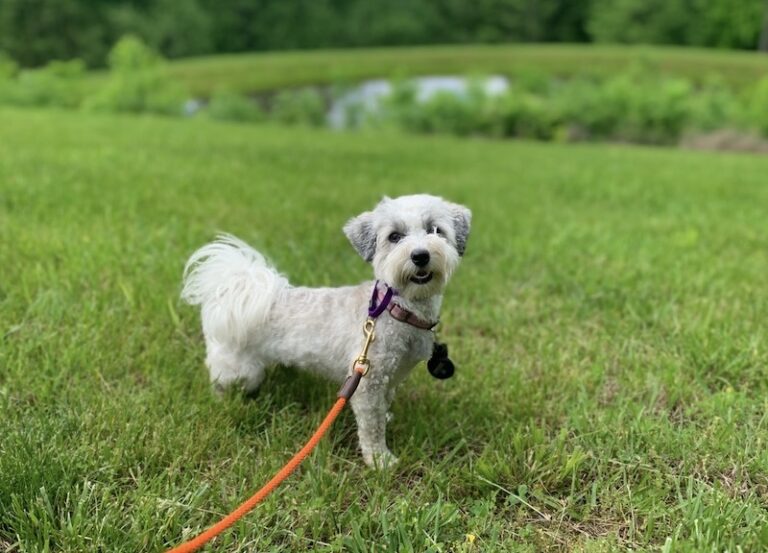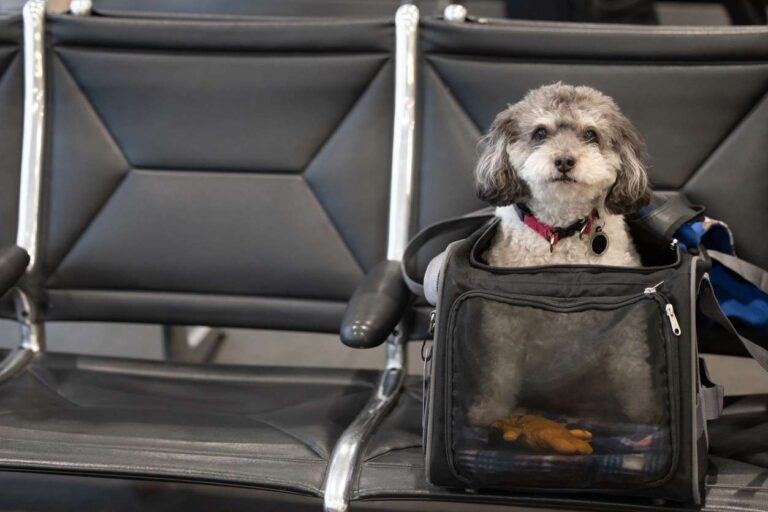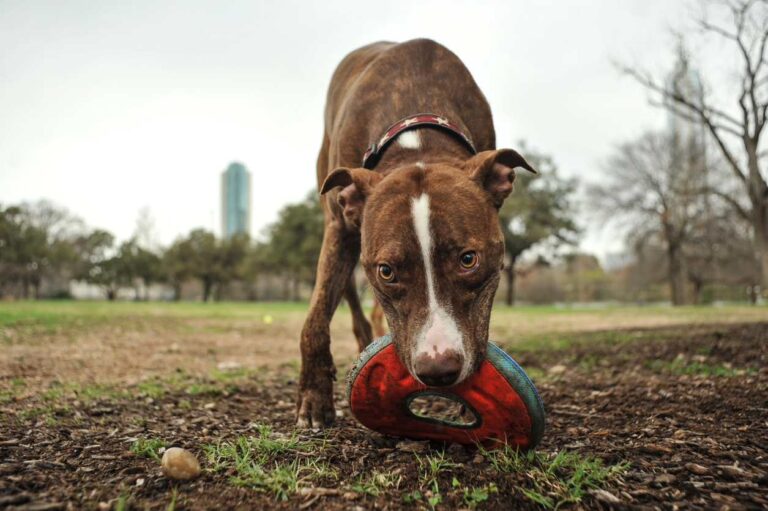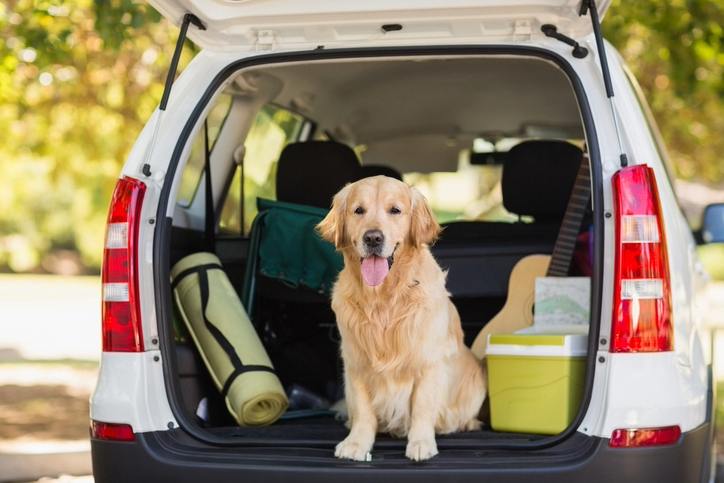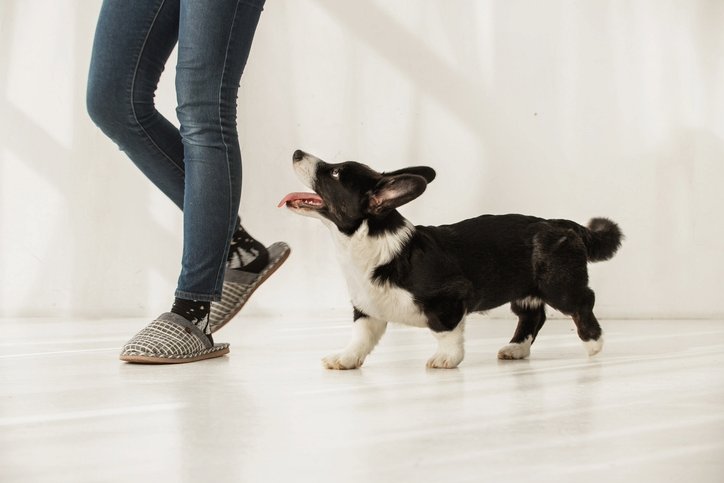We want recall to be a fun and effective tool for you to practice and use in your everyday life, from calling your dog to come in from the backyard to being off-leash in public. Off-leash obedience can take up to a year or more of consistent training, but it’s rewarding to slowly watch your dog become more attentive, confident, and trustworthy!
The order of events related to recall is as follows:
- Say the command
- Reinforce the dog looking at you or walking toward you
- Your dog approaches you and automatically sits at your feet
- Grab your dog’s collar (for safety)
- Give your dog a treat
Supplies
- 30-50 ft long line
- 5-6 ft nylon leash
- Martingale collar
- High-value treats or kibble
- Treat bag
This command can be challenging since it requires multiple steps, but with the right amount of practice and training your dog will successfully comply with the come command every single time!
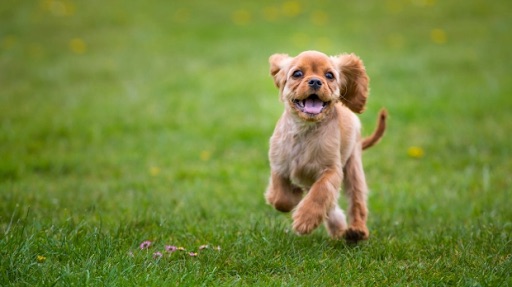
Where To Start
Step 1: Name recognition
- Start inside where there are minimal distractions.
- Put your dog’s martingale collar on and attach the 5-6 ft nylon leash.
- Stand 1-2 feet away from your dog and say your dog’s name.
- When they look at you, mark the particular behavior by saying “good.” We use the word “good” to capitalize on the completion of a behavior. After saying “good,” give them a treat.
Before moving forward, allow your dog to be successful by completing 5-10 successful trials in a row. Make sure you only say their name one time!
Step 2: Basics of the recall
Once your dog is reliably looking up at you every single time you say their name, you are ready for the next step.
- Stand 2-3 ft away from your dog and hold onto their leash.
- Say your dog’s name and back up quickly. The second they turn to look at you, say “good” and praise them “good job, good girl/boy” until they get to you. You want to do this excitedly by patting your legs or talking in a way that encourages your dog to jog or run rather than just walk.
- Hold a piece of kibble or high-value treat in your hand so it is visible to your dog. Lure your dog up to you by squatting and putting your hands out in front of you, in front of your dog’s nose, and slowly bringing your hands up to the center of your chest as you stand up straight so your dog’s bottom touches the ground.
- Praise them and grab your dog’s collar (this will be important when working outside, so you can safely grab ahold of your dog if needed) and give them the treat.
- Allow your dog to do 5-10 successful trials in a row before moving on.
At this point, your dog should start to get the flow of acknowledging you when you say their name, coming to you, sitting at your feet, allowing you to grab their collar, and being given a treat.
Step 3: Now you can introduce the official command!
When you say your dog’s name, say {“Your dog’s name, come.”}. The same criteria apply: we want your dog to turn and look at you after the command, say “good”, praise them as they come towards you, sit automatically at your feet, allow you to take their collar, and then give a treat. Finally, release your dog from the command by saying {“Your dog’s name, free.”} Do 5-10 successful trials before moving forward. As you continue training in the house, start creating additional distance from them.
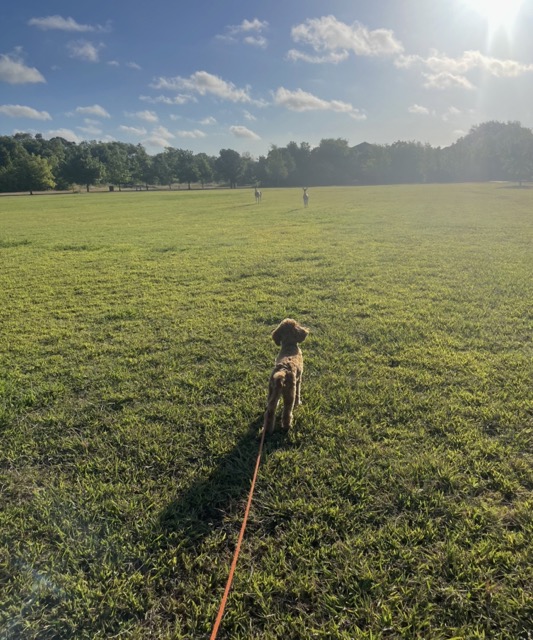
Step 4: The 3 D’s of Dog Training
As your dog becomes more reliable inside the home and is being called from different rooms of the home, start taking your dog outside to practice with the long line. At this point, you can begin working on the 3 D’s of dog training, which includes distance, duration, and distractions.
- Start on a surface that does not have a lot of distractions. We recommend large areas of concrete or driveways and practicing outside at short distances, starting with 5-10 ft between you and your dog.
- Make sure you are always holding onto the long line at some point in the line! Practicing outside comes with a lot of distractions and challenges (e.g. smells, people, small animals, dogs) that could cause your dog to not comply with the come command. Starting off easy, and slowly increasing the level of difficulty for your dog will allow them to be the most successful. Eventually, you can increase the distance between you and your dog, working your way up to 30-50 ft, or more!
- As your dog becomes more reliable, increase the duration and distractions. You can go to a busy park, work in an unoccupied area outside of a dog park, allow them to sniff around in the grass for longer periods of time, etc.
- Please note if you practice at a new location, always start off with less distance between you and your dog. New places come with their own challenges and distractions and we want your dog to be successful. So even though it may feel like you are taking a small step back if your dog reliably recalls from 50 ft away at home and only 10 ft away at a busy park, that’s alright!
- Distances and distractions can be increased as you continue to practice. Generalizing the behavior so it is reliable in all kinds of situations and environments is an important and critical part of training.
Troubleshooting
- If your dog comes barreling into you, take one step forward to stop them. This will help them come up to you politely instead of knocking you over.
- If your dog likes to take his or her sweet time on coming to you, back up quickly so they start jogging towards you. This will motivate your dog to quickly come to you. You can also use praise, praise more if you already are, or speak in a high-pitch, excited tone to encourage your dog to come to you more quickly.
- If your dog veers to the left or right when they come up to you, take a step to the left or the right and step in front of them. We want your dog to approach you head-on and sit in front of you. Also, double-check which hand you are feeding with. If you constantly provide the treat with your right hand, and you start to notice your dog sitting more to your right rather than directly in front of you, try feeding them with your left hand occasionally!
- If your dog pops up quickly when they get to you, grab your dog’s collar and then give them a treat so they do not associate coming to you and immediately getting released. If they pop up before they receive the treat, pull the treat back, wait for them to sit back down, then slowly re-offer the treat. They should wait until you use the release word “free” before standing up.
Happy Training! If you’re struggling with teaching your dog the “come” command or want to learn other commands, our in-home obedience training programs are a great option for you!
